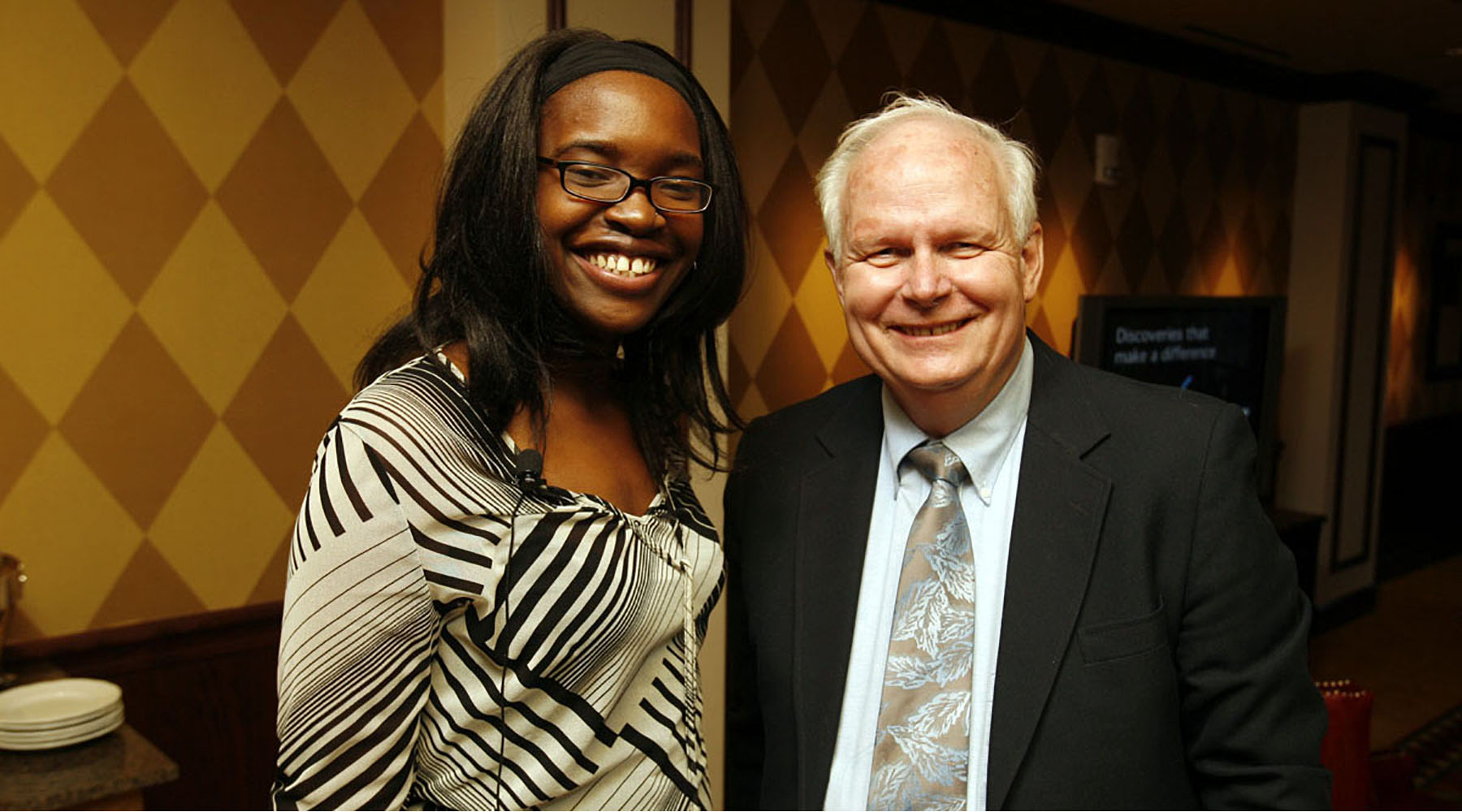This summer, OMRF marked a major event in the history of the foundation. Unlike other milestones in our 73-year history, though, this one passed quietly.
On the final day of June, Dr. Chuck Esmon retired.
Chuck is, to put it simply, a giant. Perhaps Dr. Paul Kincade, then OMRF’s vice president of research, put it best when the American Heart Association recognized Chuck with its Distinguished Scientist Award in 2014.
“Oklahoma is blessed to have some very accomplished scientists, and Chuck Esmon may be the best of them. Again and again, he has made discoveries that really matter, and ones that impact human health.”
That quote captures two central aspects of Chuck’s career.
First, Chuck has been a pioneer in the field of thrombosis and hemostasis. His work on protein C and the activated protein C pathway is enshrined in textbooks throughout the land. Thanks to him, we now have a much deeper understanding of the mechanisms that control the process of blood clotting and the links between clotting and inflammation.
But Chuck was never content with knowledge for knowledge’s sake. Since the outset of his career, he focused on translating his insights into therapeutics that could change patients’ lives.
In the 1980s, his lab would gather buckets of blood from the Oklahoma City stockyards to study clotting factors. That work, done in tandem with his longtime OMRF collaborator Dr. Fletcher Taylor, created the first FDA-approved treatment for severe sepsis.
When it received marketing approval in 2001, Eli Lilly’s Xigris offered new hope for a condition that kills about 250,000 Americans each year and is the leading killer in the country’s intensive care units. While the drug ultimately did not reach the lofty sales targets Lilly had set, ICU doctors relied upon it when traditional sepsis treatments came up short.
Although Lilly ultimately pulled Xigris from the market in 2011, its legacy lives on in the patients it saved. At OMRF, we heard from many of those patients, including Rayna DuBose, who received the drug after being placed into a medically induced coma in 2002.
“They’d tried everything,” she said. Yet the standard courses of treatment—respirators, fluids, antibiotics—all failed. “Pretty much, I was dead. Then they gave me Xigris, and I came back to life.”
For most scientists, even a single lifesaving drug would represent a career pinnacle. But Chuck is not most scientists.
In 2007, Baxter’s Ceprotin earned FDA approval. Based once again on Chuck’s work, this drug represented a sea change for patients suffering from protein C deficiencies. A dozen years later, it remains the standard of care for this life-threatening condition.
In the final decade of his career, Chuck continued to blaze new paths that held therapeutic potential. In particular, he focused on histones, a family of proteins that he discovered can enter the bloodstream and kill the lining of blood vessels, resulting in uncontrolled internal bleeding.
Two years ago, OMRF entered into a partnership with GSK to develop antibodies to stop histones’ action. “If a patient is suffering from severe inflammation, these antibodies hold the potential to prevent multi-organ failure,” says Chuck. Then last year, OMRF entered into partnership with Shanghai RAAS Blood Products to develop another one of Chuck’s antibodies, this one to treat hemophilia and traumatic bleeding.
The fruits of these partnerships—and others yet to be announced—will take years to ripen. Still, if Chuck’s past track record is any predictor, we can expect an abundant harvest.
Many researchers prefer the ivory tower to the world of industry collaborations. With a pedigree that includes a quarter-century as a Howard Hughes Medical Investigator and membership in the National Academy of Sciences, Chuck could easily have chosen this approach.
Instead, he opted to apply his laboratory insights to clinical problems. And that choice has changed the lives of countless patients.
Years after his research saved Rayna DuBose from sepsis, Chuck finally had the chance to meet her. It was, he says, the perfect affirmation of a life’s work.
“When Fletch and I started working on this project, our fondest hope was that it might actually help people. To see that hope come to fruition in someone special like Rayna makes it all worthwhile.”
Thank you, Chuck, for a career filled with life-changing discoveries. Your work has epitomized OMRF’s mission: “that more may live longer, healthier lives.”



